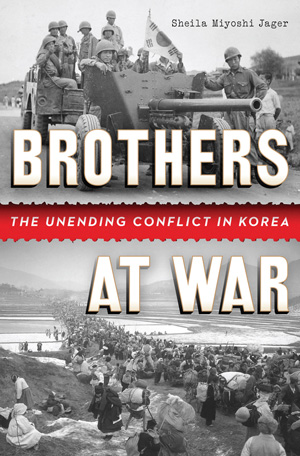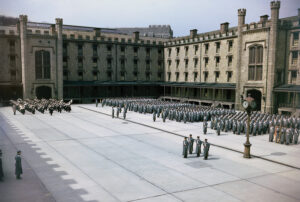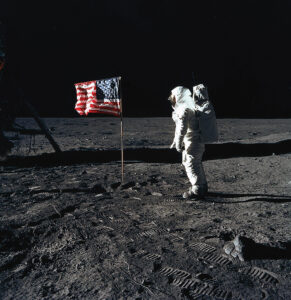
Brothers at War
The Unending Conflict in Korea
By Sheila Miyoshi Jager. 608 pp.
W. W. Norton, 2013. $35.
Reviewed by William Donnelly
SHEILA MIYOSHI JAGER’S fascination with the Korean War and what she describes as “its continuing and evolving impact on the two Koreas and the rest of the world” began with a 1996 visit to the War Memorial in Seoul. Jager, a professor of East Asian studies at Oberlin College, noted the paradox of commemorating a war that technically had never been declared over. Although a 1953 armistice ended the fighting, North and South Korea never signed a peace treaty.
Repeated visits to the memorial inspired this book and its themes. It is a military history of the conflict but also an examination of its evolution—from Korea’s civil war of 1945–1950, through the 1950–1953 fighting, and then into the global Cold War and the modern effort to maintain regional stability. Throughout, she argues, there is a “continuous struggle between North and South Korea for the mantle of Korean legitimacy.” Yet Jager also makes clear that this fierce family fight has enveloped the international community and continues to influence domestic politics in China and the United States.
The book is a work of synthesis, with Jager drawing on a wide variety of published and unpublished sources, including much recent scholarship from China, South Korea, and the United States. The depth and breadth of her research provide a solid foundation for her measured judgments. The prose is clear and free of scholarly jargon. She ably discusses matters of politics and strategy while tapping memoirs and oral histories to illustrate how the conflict affected individuals. Readers should attend to the endnotes, where Jager often offers interesting details and sometimes engages with conclusions differing from hers.
The first 12 chapters cover the years from the end of Japanese colonial rule in 1945 to the armistice in 1953. These chapters cannot yield an examination as detailed as Allan R. Millett’s three-volume The War for Korea, but they are a good overview that pays sufficient attention to all the major combatants and reserves a chapter for the “uncommon coalition” that was the United Nations force. Jager rightfully stresses that, despite the involvement of outsiders, this was a war for survival between the competing Korean regimes, which meant barbarism was legitimized for both.
The book’s most important contribution is its nine-chapter analysis of how the war affected international relations and domestic politics in China, the United States, and the two Koreas after the armistice. Jager looks at how the “lessons” of Korea informed decision making in the Vietnam War. The Korean conflict, she argues, “instructed Mao on the profound linkage between war and revolution” and led him to support the Vietnamese communists in large part to help further radicalize the Chinese masses, but not to the extent of sparking war with the United States. Among Americans, the Korean conflict generated “never again” sentiments that blocked French requests for support in Vietnam. By 1964, however, opinion in the States had changed, and many saw the war as a successful limited conflict that could be replicated in Vietnam.
Jager brings the themes of the book together in her account of why Park Chung Hee—the former communist who seized power in South Korea in a 1961 coup—dispatched the largest non-American force to support South Vietnam. Taking up another fight against communism was not an easy decision, but Park decided to align with the United States and “refight the Korean War in Vietnam,” as Jager puts it, to mobilize support for his rule and win American aid that would strengthen South Korea’s economy and autonomy.
An epilogue considers whether increasing Chinese involvement in North Korea will bring an end to the conflict and how, once again, the memory of the war is used to explain and justify current policies. Brothers at War is an important contribution to the literature on this conflict and is highly recommended.
William Donnelly, a historian at the U.S. Army Center of Military History in Washington, D.C., has written extensively about the American army in Korea.





